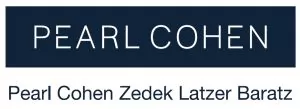In this uncertain period, many companies must make difficult decisions about the structure and continuity of their workforce. For companies employing foreign nationals on nonimmigrant work visas, this question can come with an additional set of considerations. We are providing the following guidance to assist with your company's decision-making around these issues. We strongly recommend that you consult with counsel before any final decisions are made, as the legal guidance around these immigration policies is constantly evolving.
All nonimmigrant work visas are conditional upon the continued employment of the foreign national by the employer. While some visa categories are more flexible than others about required hours and payment of wages, if employment is terminated, the employee is no longer in valid nonimmigrant status, and has 60 days to either file a petition with a new employer or depart the country.
H-1B Visa Employees
Wage payment requirements are much stricter for H-1B employees than for other visa categories. If an employee is temporarily furloughed, benched, or otherwise rendered temporarily non-productive, the employer may still be obligated to pay the minimum required wages according to the Labor Condition Application (LCA) filed with the H-1B petition.
Non-productive status is defined as any time during the validity of the LCA and H-1B petition where an employee is unable to work. When an employee is in a non-productive status due to a decision of the employer (e.g., due to a lack of work), the employer continues to be obligated to pay the required wage. On the other hand, an employer is not required to pay the required wage to an employee in non-productive status, when the employee is non-productive at the employee's voluntary request and convenience (e.g., caring for ill relative) or because they are unable to work (e.g., health reason that incapacitates the employee). The employer would still have to pay the required wage if the employee's non-productive period was subject to payment under the employer's benefit plan or other statutes such as the Family and Medical Leave Act.
Work from home: If an employer's H-1B employee is simply moving to a new job location within the same area of intended employment, a new LCA is not generally required. This includes situations where an employee is working from home, as long as it is within "normal commuting distance." If there is a change in worksite of longer distances for over 60 days, an amended petition may be required.
Converting an employee to part-time status: The employer must file an amended petition with USCIS. The employee is permitted to commence part-time employment upon the receipt of the H-1B petition.
Termination of obligation to pay wages: If the employment relationship is cancelled, the employer must notify USCIS that the employment relationship has been terminated so that the petition is canceled.
Please note that if the employment relationship is terminated, the employee will only be able to be rehired upon submission (and possibly only upon approval) of a new petition.
L-1, O-1, E and TN Employees
There is no legal obligation to pay a minimum required wage for employees, other than state and federal requirements applicable to all employees. If there is a material change to employment (such as a substantial reduction in hours or change in job duties), it may be necessary to file an amended petition. This should be assessed on a case-by-case basis with advice of counsel.
Short, unpaid leaves due to required quarantine would not raise any immigration implications, as long as they are taken according to company policies in place at the time.
In general, employee status is not affected by changes to work location, including temporary work from home.
I-9 Employer Verification
As of this date, the requirement to complete a Form I-9 (and E-Verify if applicable) has not been suspended. All new hires must complete Section 1 of the Form I-9 on or before the first date of employment and the employer must complete Section 2 of the Form I-9 after physically reviewing original documents.
One strategy for compliance is to authorize an agent to act on the employer's behalf to complete Section 2. To document that the agent is acting on the employer's behalf, the best practice is to send clear written instructions for the agent performing this service, and/or create a signed agreement authorizing the designated individual to perform this duty as an agent of the company.
In cases of self-isolation and/or quarantine, the only person available to act as agent may be a family member or health care provider. While it is lawful for these people to act as an agent of the employer, special care should be taken to assure that the Form I-9 has been completed correctly and completely.
Employees with pending PERMS or I-140 Petitions
A PERM Application or I-140 petition is in most cases based on prospective rather than current employment. This should therefore not be affected by any temporary changes in the employee's employment relationship with the company. However, the employee's ability to adjust to permanent resident status may be affected by lapses in employment.
The content of this article is intended to provide a general guide to the subject matter. Specialist advice should be sought about your specific circumstances.

